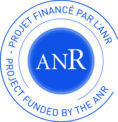Comportements et représentations spatiales collectives en milieu urbain :
Incidence des cartographies instrumentales et partagées en situation de navigation pédestre
La pratique de la marche en milieu urbain a été considérablement transformée depuis l’arrivée des outils de cartographie instrumentale comme Google Maps. Fort d’une expérimentation conduite depuis plusieurs années sur des marches réalisées collectivement à l’aide d’une application de cartographie partagée, une question centrale est apparue avec évidence : dans quelle mesure les cartographies instrumentales et partagées sont-elles susceptibles de modifier nos comportements et nos représentations spatiales ?
Si des études précédentes ont tenté de cerner l’impact des outils de navigation sur nos représentations cognitives, aucune ne s’est véritablement intéressée à l’incidence des outils d’interaction collective entre marcheurs en milieu urbain. Spécifiquement, cette recherche vise à confronter les représentations spatiales – obtenues via des dessins à main levée et des graphes – et les comportements dans l’espace, retranscris à l’aide de données de trackings collectées depuis des téléphones mobiles.
Plus précisément, les trackings seront confrontés aux dessins et aux graphes de façon arrêtée (résultat final), mais surtout de façon dynamique : évolution spatio-temporelle de la marche et évolution spatio-temporelle de la construction des dessins et des graphes. Ainsi, nous procéderons notamment à une analyse croisée des évolutions spatio-temporelles de la marche – comportements – et de la construction des dessins à main levée filmée en vidéo – représentations – (mais également en considérant l’aspect comportemental dans la construction des dessins et la restitution des graphes).
La méthodologie proposée comprend 4 groupes de sujets : i. groupe test ; ii. groupe utilisant une application de cartographie instrumentale (Google Maps) ; iii. groupe utilisant une application de cartographie partagée ; iv. Groupe iii. renouvelant l’expérimentation. Elle se développera en 3 phases : a) Analyse et confrontations des représentations spatiales individuelles et collectives ; b) Analyse et confrontations des comportements individuels et collectifs ; c) Confrontation des comportements et des représentations spatiales.
Mots clés : analyse spatio-temporelle carte cognitive, cartographie partagée, comportement spatial, déambulations, externalisations, interactions collectives, marches urbaines, navigation appareillée, représentation spatiale.
Behaviours and collective spatial representations in urban areas:
Incidence of instrumental and shared mapping in pedestrian navigation situations
The practice of walking in urban areas has been considerably transformed since the arrival of instrumental mapping tools like Google Maps. After several years of experimentation on collective walks using a shared mapping application, a central question clearly emerged: to what extent are instrumental and shared maps likely to change our behaviours and spatial representations?
While previous studies attempted to identify the impact of navigation tools on our cognitive representations, none really addressed the impact of collective interaction tools between walkers in urban environments. Specifically, this research aims at comparing spatial representations – obtained through sketch maps and graphs – and behaviour in space, translated through passively collected tracking data.
More precisely, trackings and drawings will be compared in a fixed way (final result), but especially in a dynamic way: spatio-temporal evolution of the walks and spatio-temporal evolution of the construction of the sketch maps and the graphs. Thus, we will carry out a cross-analysis of spatio-temporal evolution of walking – behaviors – and of the construction of filmed sketch maps – representations – (but also by considering the behavioral aspect in the construction of both sketch maps and graphs).
Our methodology includes 4 groups of subjects: i. test group ; ii. group using an instrumental mapping application (Google Maps), iii. group using a shared mapping application ; iv. group iii. that will repeat the experiment. It will be developed in 3 phases: a) Analysis and confrontations of individual and collective spatial representations; b) Analysis and confrontations of individual and collective behaviours; c) Confrontation of behaviours and spatial representations.
Keywords: spatio-temporal analysis, cognitive maps, shared maps, spatial behaviour, wanders, externalizations, collective interactions, urban walks, instrumental navigation, spatial representation.
